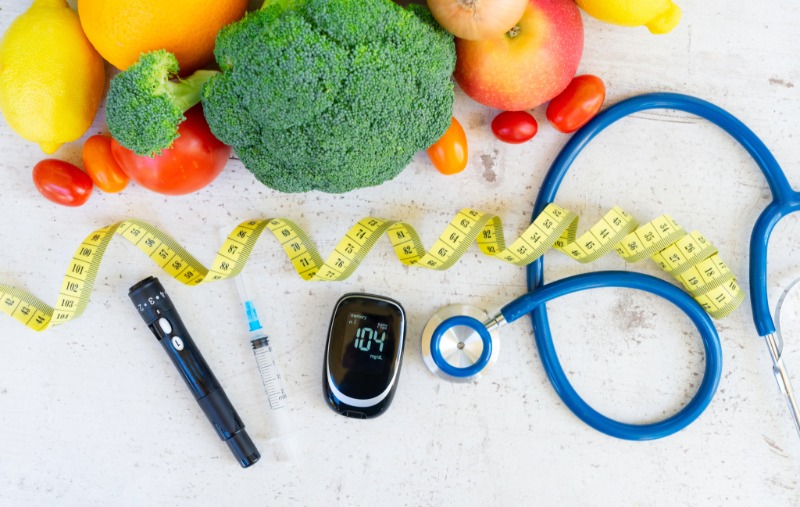Understanding Diabetes: Small Changes That Make a Big Difference
Many people think of Type 2 diabetes as simply “high blood sugar,” but it actually begins with insulin resistance. Insulin is a hormone made by the pancreas that helps move sugar from the food we eat into our body’s cells for energy. When cells stop responding well to insulin, the body has to make more to keep blood sugar stable. Over time, this extra strain causes blood sugar levels to rise, eventually leading to diabetes.
At the center of diabetes is something called metabolic dysfunction. This occurs when the body has trouble using energy from food efficiently, often because of insulin resistance, inflammation, or poor diet quality. Over time, this imbalance can lead to diabetes, heart disease, and weight gain. The good news is that metabolic dysfunction is highly reversible through healthy eating, regular movement, and building strength at any age.
Why It Happens
Diabetes often develops from a combination of poor diet and inactivity. Fried and processed foods, sugary drinks, and long periods of sitting can make it harder for the body to use insulin properly. Over time, this weakens the body’s ability to control blood sugar levels through the insulin response.
Insulin is a hormone made by the pancreas that helps move sugar from the food we eat into our body’s cells for energy. At first, when cells stop responding well to insulin, the pancreas works harder and makes extra insulin to keep blood sugar normal. This can go on for years without symptoms. Over time, though, two things can happen. The body’s cells may become even more resistant, so the insulin doesn’t work as well, or the pancreas may become worn out and unable to keep making enough insulin. When either or both of these happen, sugar builds up in the blood instead of moving into the cells, and Type 2 diabetes develops.
What can I do… Healthy Habits
- Limit fried, processed, and preservative-heavy foods that increase inflammation and stress your metabolism.
- Eat real foods. Choose colorful vegetables, lower-sugar fruits like berries, healthy fats, and quality proteins.
- Include protein-rich foods such as fish, chicken, eggs, beans, or lean meats. Protein supports muscle growth, improves metabolism, and helps keep blood sugar stable since it doesn’t cause sharp spikes like refined carbohydrates.
- Exercise: Physical activity is one of the best ways to manage or prevent diabetes. You don’t have to overdo it. Even a 10 to 15 minute walk after meals can help lower blood sugar levels. Combining resistance and aerobic exercise provides great results, but consistency matters more than intensity. The goal is to move regularly and make activity part of everyday life. Strong muscles act like sponges, soaking up extra sugar in the blood and helping keep levels balanced.
How We Can Help
Our providers at our Community Clinic offer diabetes screenings to help you stay proactive about your health. Testing includes fasting glucose and hemoglobin A1C to check for diabetes or determine if you are prediabetic. Labs can be drawn and analyzed right on campus for fast, convenient results. Our Physical Therapy team also offers individualized strength-building programs to improve insulin sensitivity, mobility, and overall wellness.
Always check with your personal healthcare provider or visit our Community Clinic before making major diet or exercise changes. Your provider can help create a plan that fits your personal health needs and medical conditions.

